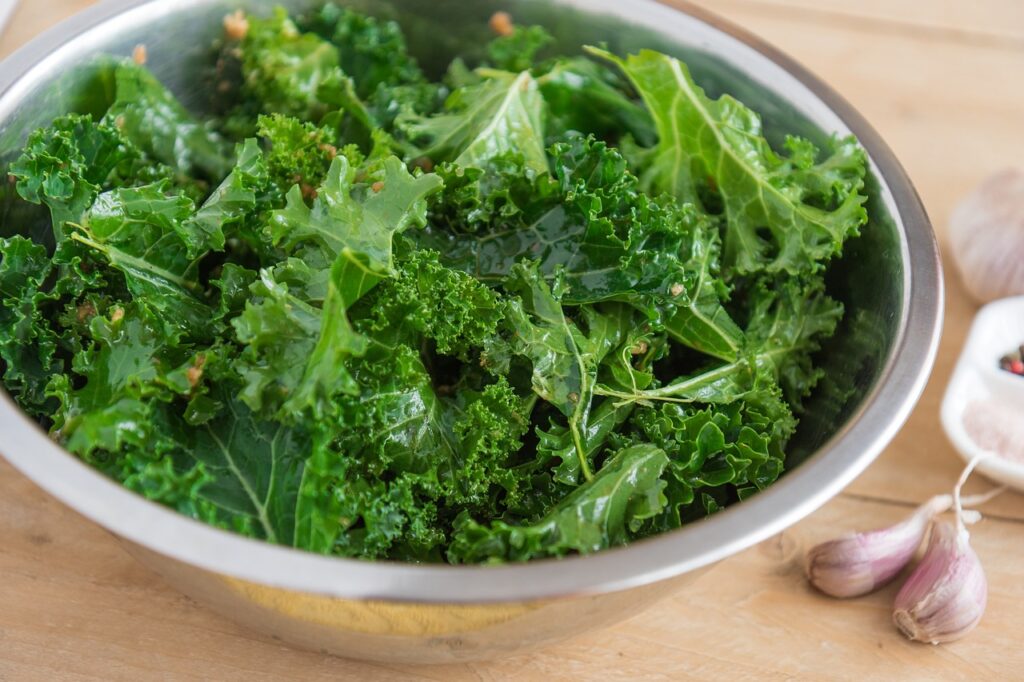“Popeye was right about spinach: dark green, leafy vegetables are the healthiest food on the planet. As whole foods go, they offer the most nutrition per calorie”.
-Dr. Michael Greger

When it comes to eating healthily most of us do not get our recommended servings of fruits and vegetables. One of my favorite ways to ensure I eat healthily is to incorporate more greens into my daily diet.
Why greens? Dark green vegetables and leafy greens offer a variety of nutrients such as fiber, calcium, vitamins K, A, C, and antioxidants such as beta carotene, which may protect the eyes and contribute to good vision.
Leafy greens are also a major source of folate, potassium, magnesium, iron, and as I mentioned before dietary fiber for these many reasons, I believe that we should all be adding more greens to our plates with every meal we consume. According to The My Plate Nutritional Guide, they recommend that adults eat 2 ½ to 3 cups of vegetables per day. And their recommendation for dark green vegetables is about 1 ½ to 2 cups per week.
How do you do this? Do you ask? Well first let us start with the different varieties of greens that are out there.
There are several diverse types of leafy greens such as kale, purple kale, collard greens, mustard greens, spinach, romaine lettuce, iceberg lettuce, swiss chard, arugula, watercress, turnip greens, dandelion greens, cabbage, Bok choy, broccoli, and broccoli raab.
I prefer to buy these gorgeous greens fresh when they are in season from my supermarket or from the farmers market, which is a wonderful way to buy seasonal, local, fresh, and more affordable produce.
Most people do not like the taste of raw greens by themselves, especially the more bitter and dark green ones, and eating salads every day is not very appetizing.
So here are some of my favorite ways to sneak these greens into your meals:
- Add greens to your smoothies; adding greens such as kale, spinach arugula, and dandelion greens to a smoothie with fruit will help mask the bitter taste and make it easier to drink them.
- Juice greens like kale, swiss chard, romaine lettuce, spinach, and collard greens along with other fruits (pineapple, cucumber, lemon, orange) and vegetables for a delicious glass of homemade juice.
- Add chopped greens such as spinach, kale, and collard greens along with other vegetables to your morning omelet or tofu scramble (if you are vegan like me) for a flavorful and nourishing breakfast.
- Add cabbage, Bok choy, broccoli raab, broccoli, or mustard greens to stir-fries, or rice dishes, sauteed with olive oil and garlic as a side dish.
- Add fresh or frozen chopped greens to pasta sauces, soups, curries, chili, or your favorite stews.
- Add spinach, watercress, arugula, and baby kale to your sandwiches, wraps as topping on pizza, and flatbreads.
- use large steamed cabbage, lettuce, and swiss chard leaves as wraps for rolls, burritos, and tacos.
- Instead of plain salad make a buddha bowl as another choice with a base of greens, then add whole grains, colorful vegetables, and your preferred choice of protein.
- Make a pesto sauce with kale or other greens, or make green salad dressing with cilantro, parsley, and any greens you like to use in salad bowls or as a dipping sauce.
You can find a vast variety of dark leafy greens to choose from- from baby kale to broccoli raab to dandelion greens. I suggest you choose local and fresh when available but frozen greens are also good alternatives when short on time. There are many ways to get creative and sneak your daily serving of greens into your favorite meals, in doing so you will reap all the benefits of these flavorful and nutrient-dense vegetables. So, enjoy them raw, cooked, juiced, or blended!

